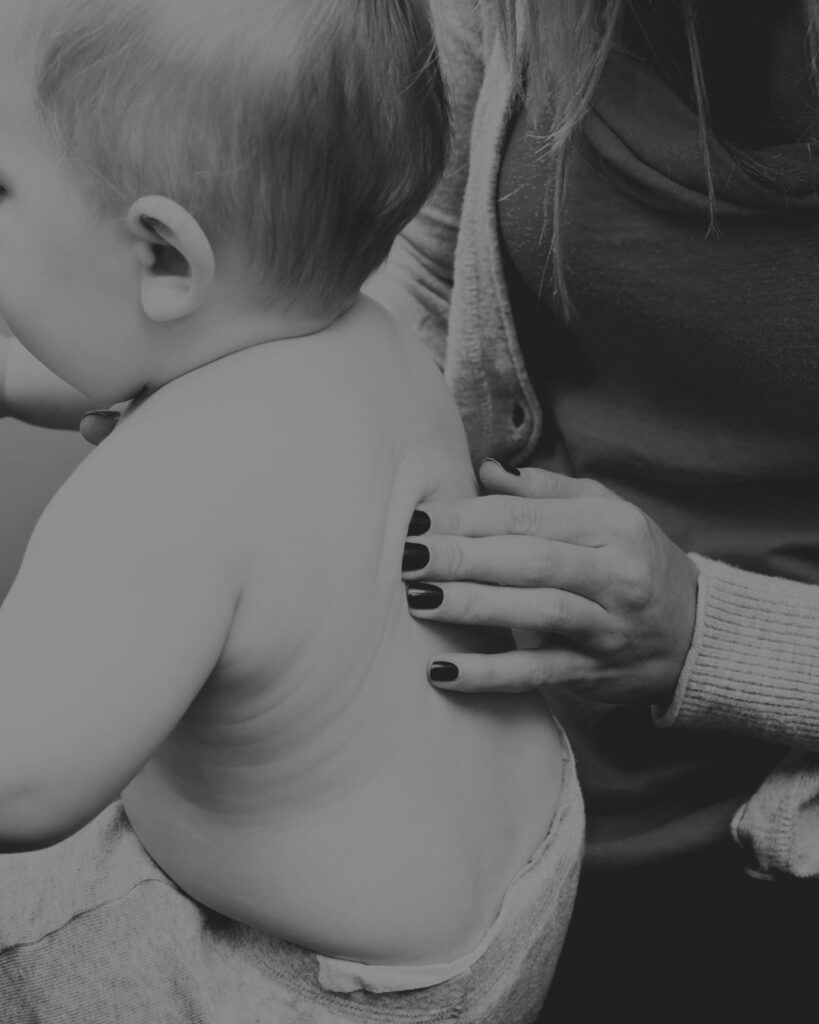
Tiny Adjustments, Big Relief—For Both of You
Just-for-baby chiropractic care to side-step sleepless nights.
Adjustments Designed For Baby
Coming into the world can be a big, overwhelming experience for little ones. Everything is new — sights, sounds, and sensations. It’s no wonder babies sometimes need a little extra support to feel comfortable in their tiny bodies. That’s where chiropractic care comes in.
At our practice, we take a gentle, nurturing approach to infant care. As a mom herself, Dr. C’Aira understands just how delicate and precious those first months can be. With years of experience, she uses kid-friendly techniques designed specifically for small, still-developing bodies. No harsh twists or intimidating pops — just soft, soothing adjustments that help your baby feel more at ease.
From colic and reflux to trouble sleeping or general fussiness, chiropractic care can be a calming way to support your baby’s comfort and development. Think of it as helping them adjust to this big, beautiful world they’ve entered. We can’t wait to meet your tiny explorer and help them feel their best!

I love this place! Everyone is so sweet and professional there. Dr. C’aira is one of my favorite people and I always looked forward to going in!
Molly Collins

Don’t Go It Alone
Being a mom herself, Dr. C’Aira knows just how tough it can be when your little one seems uncomfortable, and you’re left wondering what’s wrong. The good news is that you don’t have to figure it out alone.
With plenty of hands-on experience and a heart for helping families, Dr. C’Aira can spot common challenges early. After years of caring for tiny humans, she’s seen it all when it comes to baby discomfort — from fussiness and tummy troubles to ear infections and growing pains. Her gentle chiropractic approach can provide the support your little one needs to feel better, naturally.
If something feels off or you’re spending sleepless nights wondering, “What if?” — we’re here for you. Even the smallest adjustments can make a world of difference in helping your baby feel more comfortable and calm. And it’s not just for the little ones! Chiropractic care can also be a wonderful support for new moms, easing the strain that pregnancy, birth, and caring for a newborn can place on your body.
You’re doing an amazing job, and we’re here to help you every step of the way.
I highly recommend Dr. C’aira Satchell. She’s very knowledgeable and considerate of my pain needs, & I always feel better after leaving.
Alisha Harrington
Frequently Asked
What makes this different?
The team at Spine and Sports Chiropractic has one goal – to educate you on the benefits of chiropractic care and proper movement. We will never pressure you into care you do not want or need. Our costs are affordable and we spend time with all of our patients with a goal of helping you reach optimum recovery and wellness.
Do you take my insurance?
At Spine & Sports Chiropractic, we work with all forms of insurance. We require payment at the time of service and will provide you with a superbill to submit to your insurance for reimbursement. Your insurance company will send you a check in the mail for what is covered by your plan. The reason we are not an in-network provider is because it limits the quality of care by dictating how many times we can see a patient and the type of care we can provide. We are able to provide the highest quality of care by being out of network, truly allowing us to serve our patients.
We understand that insurance premiums are increasing and covered benefits are decreasing, which means the patient pays more. We know that getting out of pain takes more time and effort than staying out of pain. Your choice of prevention and supportive care will benefit you financially and physically in the long term. Recent articles show people who use chiropractic first spent on average $1,200 less per year in healthcare, are less likely to end up in surgery, and have higher satisfaction rates.
What about other payment options?
Spine and Sports Chiropractic Clinic believes in the value of wellness care for you and your family and have maintained a pricing structure that allows care for all budgets. Our office participates in most insurance programs. We also accept auto accident and workers compensation cases. To learn more about our payment options for chiropractic and wellness care, you can call our office directly.
Insurance
Most insurance plans are accepted at our office. We accept auto accident, workers compensation, personal injury and most health insurance plans, including Medicare.
No Insurance
For patients who have little or no chiropractic insurance coverage, flexible payment programs can be arranged. If you have no insurance or do not have chiropractic benefits there is still a way for you to receive the care you need. Many patients pay directly for care, as they discover chiropractic to be extremely cost-effective and affordable.
Family Plans
Our focus at Spine and Sports Chiropractic Clinic is to actively help you and your family in taking responsibility for your health, wellness, and disease management. We assist and guide you to take the time to care for the important people in your world: you and your family. In an effort to make living the wellness lifestyle as easy and affordable as possible, we can create a customized family plan that is specific to you and your family.
Treatment Process
Here’s how we’ll work together.

Initial
Appointment
Your first appointment will take 45 minutes. A member of our team will listen deeply and ask lots of questions. We’ll examine the area that’s bothering you and give treatment.

Follow Up Appointments
Follow up visits last 15 minutes. These include the chiropractic adjustment, soft tissue treatment, and rehabilitation to help you stay pain-free long after your visit.

Ongoing
Work
We’ll plan ongoing work together based on your needs and your priorities. No big, flashy, treatment plans here. Just common sense and the work it takes to get you well.

Happy Mom, Happy Baby
If something seems off or you’re worried about Baby’s development, let Dr. C’Aira help.

Being a new mom is full of uncertainties, and even with experience, the ‘what ifs’ can keep you up at night. Juggling your baby’s needs while caring for yourself can quickly feel overwhelming.
That’s why I love helping new moms and babies. My approach is gentle, safe, and baby-informed. Let’s eliminate some of the guess work and bring comfort to both you and your little one.
-Dr. C’aira
